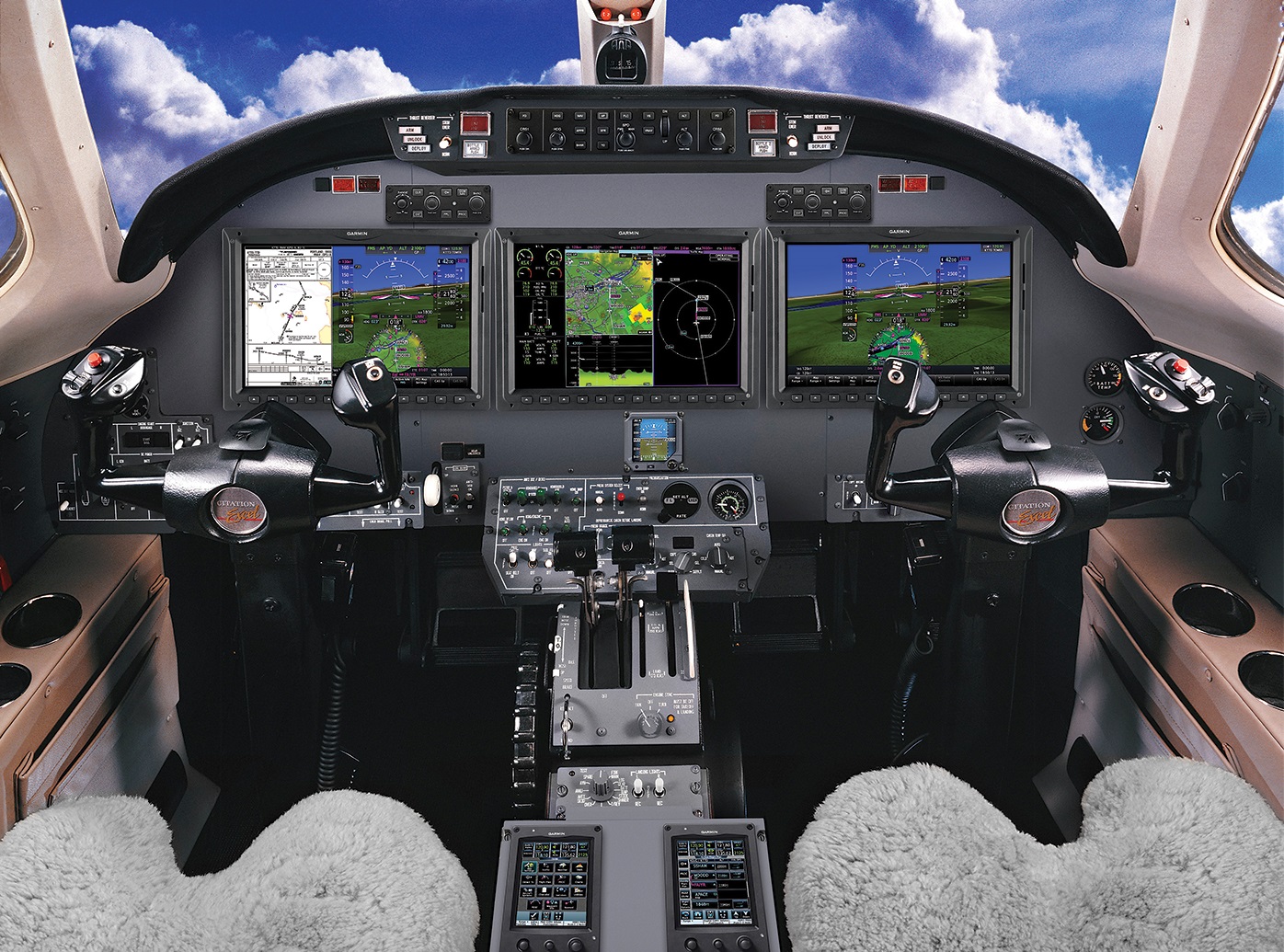Estimated reading time 10 minutes, 47 seconds.
Operating in times of technical transitions is never simple, easy, or inexpensive, especially when operating turbine-powered aircraft, which have stringent certification requirements when it comes to essential systems like avionics.
Analog to digital systems was one transition, and the overlapping generations of new digital technology is another. Along the way, what was (briefly) innovative technology is now an orphaned avionics system in an airframe that is a decade old, give or take, which further complicates the return on investment equation when considering an avionics upgrade.
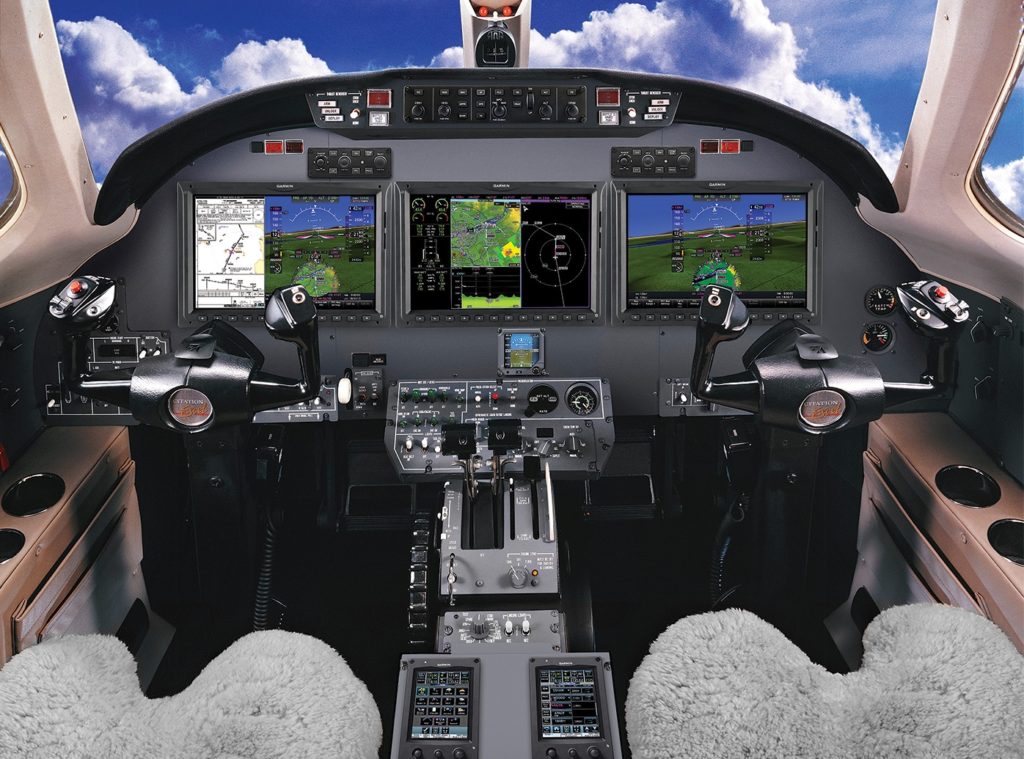
To operate efficiently and economically in–and take advantage of–the world’s 21st century airspace, which everyday depends on satellite connections, operators must calculate the return of their avionics upgrade options. Perhaps the first decision waypoint is whether to focus only on systems currently certified for a particular airframe or, if the fleet numbers work, to certify a system custom engineered for an operator’s specific needs.
Avionics upgrades need not be all-or-nothing efforts because technology’s transitions take time. Operators should add this variable to their upgrade return on investment equations. In ordering upgrade priorities, if an operator does not have an imperative need for a system such as automatic dependent surveillance – broadcast (ADS-B), whose ultimate requirements Canadian regulators have not yet firmly specified, it should probably wait for the installation of more established and beneficial systems.
Given the spectrum of turbine-powered (both prop and fan) aircraft, one system will not fit all of them, so let’s consider them by category and in alphabetical order by manufacturer.
Integrated upgrades
Avidyne Corporation–Avidyne continues to expand its Cessna Citation retrofit program for IFD5-Series flight management system (FMS) navigators. The integration of its IFD550/545 FMS navigator brings localizer performance with vertical guidance (LPV) approach capability, electronic approach charts, wireless connectivity, and ADS-B compliance. With the successful integration in the CJ-525 and 525A, Avidyne is actively working on certification programs for Cessna CJ1+, CJ2+, and CJ3.
The IFD FMS system features Avidyne’s new GPS LegacyAviation System (GLAS) protocol that interfaces directly with the legacy avionic systems in these CitationJets without the extra cost of an external adapter or translator box or electronic flight information system (EFIS) factory upgrade. With the IFD-series FMS upgrade, CJs will get hybrid-touch FMS capability, autopilot-coupled LPV approaches, 3D synthetic vision of terrain, obstacles, and traffic, and Wi-Fi connections to the IFD100 and many third-party apps, including ForeFlight. ADS-B Out compliance, provided by dual remote or panel-mount SkyTrax transponders, is optional.
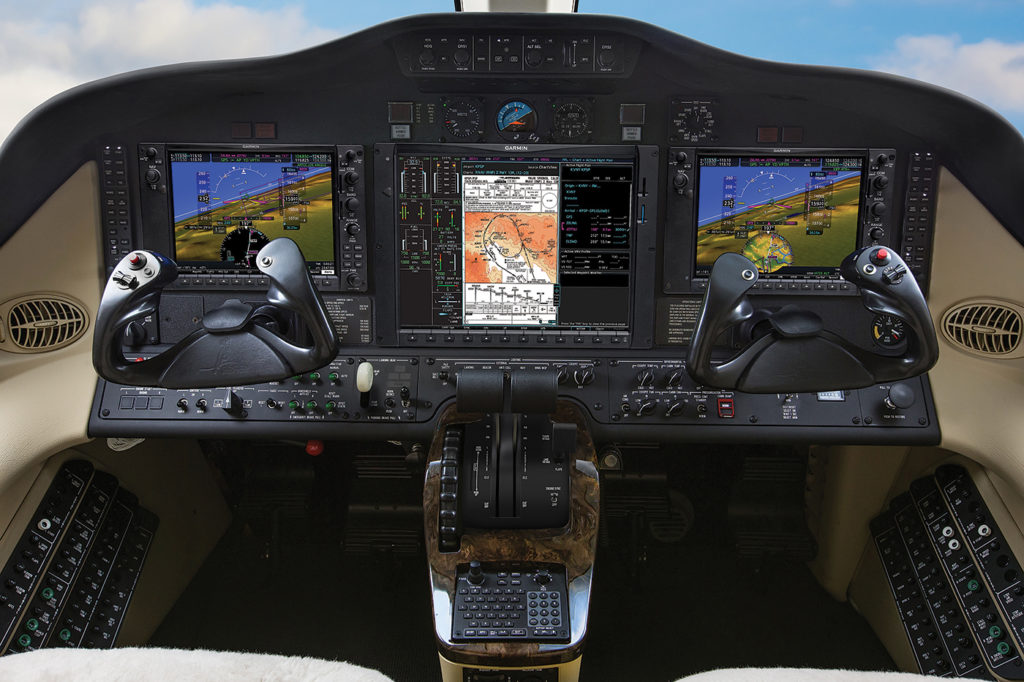
BendixKing–Derived from Honeywell’s Primus Epic and Apex avionics systems, BendixKing has tailored its integrated AeroVue for retrofit in Part 23 class III and IV, and Part 25 aircraft. Pilot and co-pilot have a dedicated primary flight display (PFD) and they share a multi-function display (MFD). The screens replace all legacy mechanical equipment and include SmartView synthetic vision, FMS, radios, ADS-B compliant transponder, and autopilot. Options include weather radar, XM weather receiver, radar altimeter, traffic alert, and ground proximity warning system.
Garmin–King Air 200/300 series and Cessna Mustang owners can upgrade their original G1000 integrated systems with the next generation G1000 NXi, which enhances the system with faster processors, brighter high-resolution displays, Wi-Fi, HSI mapping, WAAS LPV approaches, and autopilot-coupled visual approaches. Options include ADS-B Out and In, and database and flight plan transfer from a tablet or phone.
The G2000 is an advanced flight deck for high-performance piston aircraft. The high-resolution displays include synthetic vision and split-screen displays of multiple systems and sensors. The touch-screen interface has shallow menus. It controls Automatic Flight Guidance and Control Systems and includes weather, charts, traffic, terrain, and global connectivity with an optional Iridium satellite data link and subscription.
An advanced integrated flight deck, the G5000 is approved for the Beechjet/Hawker and Citation Excel/XLS series business jets. With three high-resolution touch-screen displays, it features integrated engine-indicating and crew-alerting system and the latest satellite navigation, digital flight management tools, and support for future next generation technology.
Sandel Avionics–Employing next generation technology, Avilon is a fully integrated touch-screen flight deck retrofit for the Beech King Air, with future support for the Citation series. It provides redundancy and reliability in communication, navigation, surveillance, and flight guidance. Like the other members of this generation of integrated systems, Avilon meets today’s performance-based requirements and is designed to incorporate new technology as it comes online.

Universal Avionics–Employing a building-block architecture that meets an operator’s specific needs, Universal has approved systems for so many aircraft, its website has a dedicated page that simplifies searching for them. Its InSight integrated flight deck delivers all of the necessary performance-based capabilities and information while interfacing with a large number of existing components such as sensors, air data computers, radars and autopilots.
Digital predictive maintenance
Not specifically an avionics system per se, predictive engine maintenance programs take advantage of all the data integrated flight decks and/or engine monitors collect as part of their real-time display of all the necessary parameters of powerplant performance. It is a collaborative effort that relies on three data sets.
Reference data is the first. It includes manufacturer test and design data, maintenance and operating data that establishes the engine’s baseline for normal operation. Analysis programs compare this reference data to operational data collected by the avionics system on every flight.
Differences between the two recognize performance trends that detect inefficient operation, deterioration, accelerated wear and other factors that lead to failures if the operator does not address the identified causes. This leads to the third data set, maintenance manuals that enable technicians and engineers to address the issues revealed by the analysis before the problem migrates from inefficiency to engine damage.
Appearing simple and straightforward, because the entity that creates the data owns it, predictive maintenance can be a complex data-sharing relationship. Operators own the operational data. Engine OEMs are the primary source of the first and often the third sets of data, with maintenance, repair, and overhaul (MRO) organizations as another source of maintenance data.
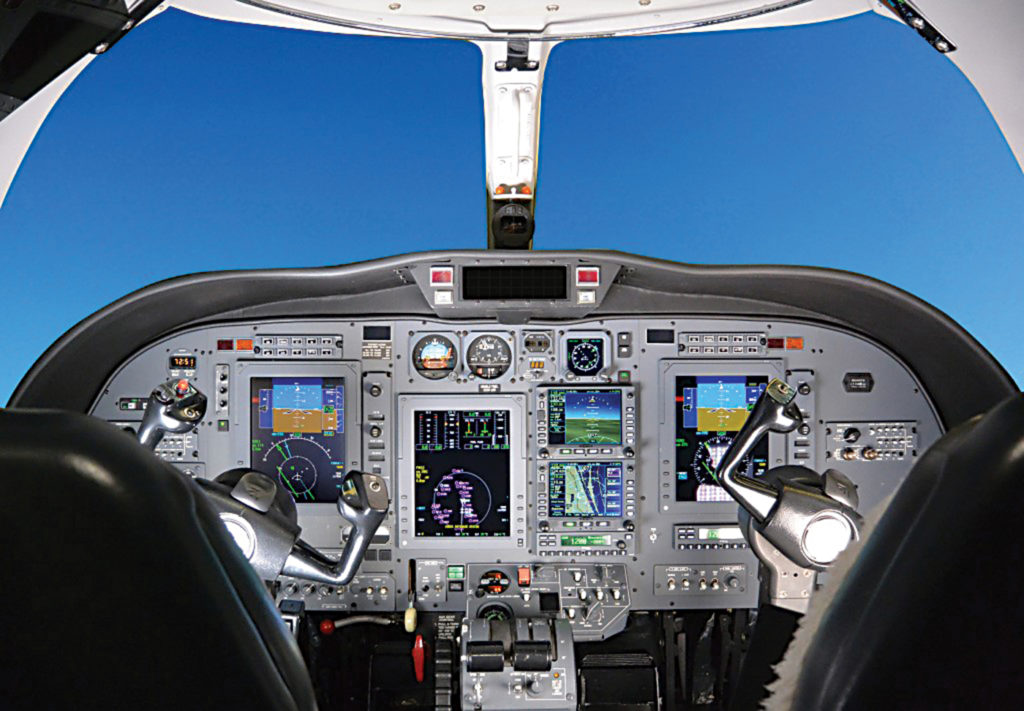
Upgrading to an integrated flight deck is one way to tap into the operational data stream. If upgrading an airframe to an integrated system isn’t an option, a system dedicated to this specific task is an economical alternative. Latitude Technologies’ modular system of monitors and communication devices adapts to most operators’ requirements.
The ENode data acquisition system works with the IONode flight data recorder to collect information for flight data monitoring and fuel management programs. In addition, it corrects the data for atmospheric conditions and will, with a communication module like its Iridium-based SkyNode S100, automatically transmit the data to the analyzing service provider.
A number of organizations provide analysis, as do engine manufactures. Pratt & Whitney Canada offers its turnkey FAST solution and GE Aviation provides a number of programs, including Prognostic Health Management+.
With maintenance being the final step in the process, the MRO that maintains an operator’s aircraft is often the place to start when considering a predictive maintenance system.
ADS-B diversity
There is no better example of the challenges imposed by avionics technology transitions than ADS-B. That’s doubly true here in Canada, where ADS-B not only relies on satellite-based augmented navigation as its position source, but also on satellite-based ADS-B listening posts.
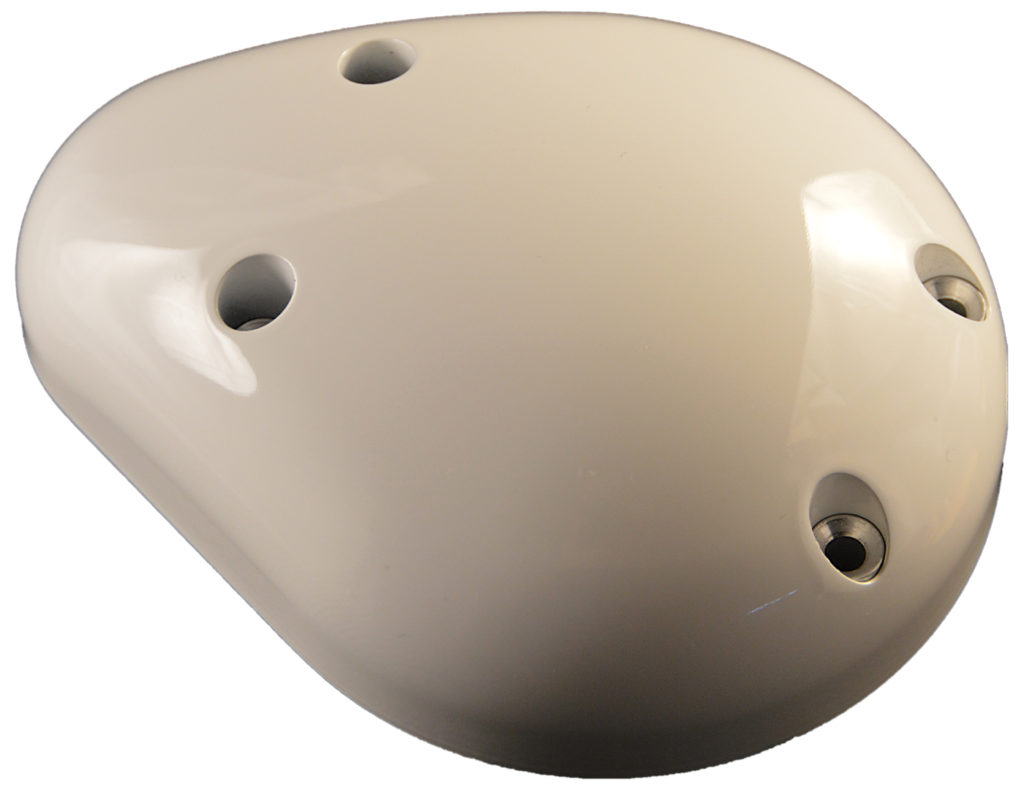
Given the vast reaches of territory where building and maintaining ADS-B ground stations is not feasible, Nav Canada, with other air navigation service providers, is part of the Aireon joint venture. Participants are working with Iridium Communications, which just completed its constellation of 66 new Iridium Next satellites in low earth orbit that will provide global ADS-B coverage.
The new service goes online this spring, and Nav Canada controllers in the Edmonton and Gander Flight Information Regions will be among the first to receive the aircraft position reports it will provide. After establishing its presence in domestic airspace in these regions, operational trials will begin in the North Atlantic, the world’s busiest oceanic airspace.
The benefits of global surveillance, tracking, and traffic management are clear. No matter where they are, controllers will see on their scopes the position and related data of any aircraft equipped with an ADS-B Out 1090ES transponder.
And that is the challenge. Like any device that communicates via radio frequency, optimal performance comes with an unobstructed line-of-sight between antennas. Ideally, antenna diversity, a dorsal antenna for satellites and a ventral antenna for ground stations, will provide optimal ADS-B performance.
Unfortunately, ADS-B transponders capable of this diversity are much more expensive than their single-antenna cousins. The involved parties, Transport Canada, Nav Canada, and aviators who use the system, are still debating the aircraft-specific antenna diversity requirements. Until the regulators conclude this discussion operators should, perhaps, delay the installation of this system, unless they regularly fly in the U.S., where ADS-B will be mandated as of Jan. 1, 2020.
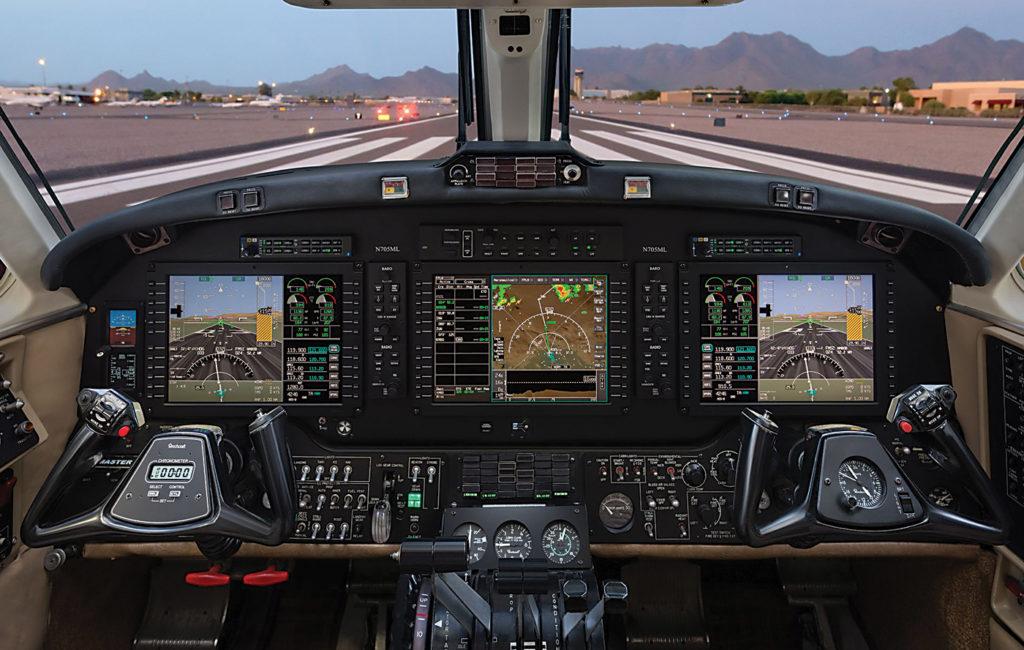
In-flight connectivity
BendixKing–AeroWave 100 HDU is an Iridium-based satellite communication system that allows the cockpit and cabin to send and receive text messages, make phone calls, and connect to the Internet anywhere in the world. With a bandwidth of 200 kbps, it will download text and graphical weather in-flight. And with the AeroWave 100 Wi-Fi Router, passengers can use their smartphones and tablets. The system also allows constant contact with an operator’s flight operations department to co-ordinate weather deviations or changes in destination. The system weighs less than 10 pounds and the antenna measures 5.6 by 4.4 by 1.9 inches. Data and voice subscriptions apply.
Garmin–The GSR 56 Iridium satellite data link connection for the company’s Connext flight connectivity systems provides subscription-based talk, text, on-demand weather, on-demand weather reporting, and transmission of aircraft maintenance reports. Mobile devices connect to it though the Flight Stream 510 Wi-Fi portal.
GoGo Business Aviation–Providing voice and in-flight Internet service, the Avance L3 system has three configurations to meet an operator’s needs. Core provides email, voice, and light Internet browsing for up to five devices. Plus steps up to full Internet connectivity for seven devices. Max provides all this service for up to 25 devices. Internet service provides email, VPN, browsing, and smartphone text and voice. The system includes a Wi-Fi router for the cabin and a 4G/LTE terrestrial modem for on-ground connectivity.
Thales Group–Thales is working with both satellite systems that cover the globe today, the 66 new Iridium Next satellites in low Earth orbit and Inmarsat’s 13 geostationary orbits. FlytLINK provides voice, text, and web connections for the cockpit and crew (1.4 mbps download, 512 kbps upload) through the Iridium network. Thales is developing systems that will connect with Inmarsat’s Swift Broadband and GX Aviation services.

The pace of technology’s transitions continues to increase. OneWeb, the global communications company whose mission is to bring broadband connectivity to everyone, everywhere, successfully launched the first six satellites of its constellations. There are no aviation connections to it, yet.
An instrument-rated commercial pilot forever curious about all things aeronautical, Scott M. Spangler has been an aviation journalist, editor and photographer for three decades.
